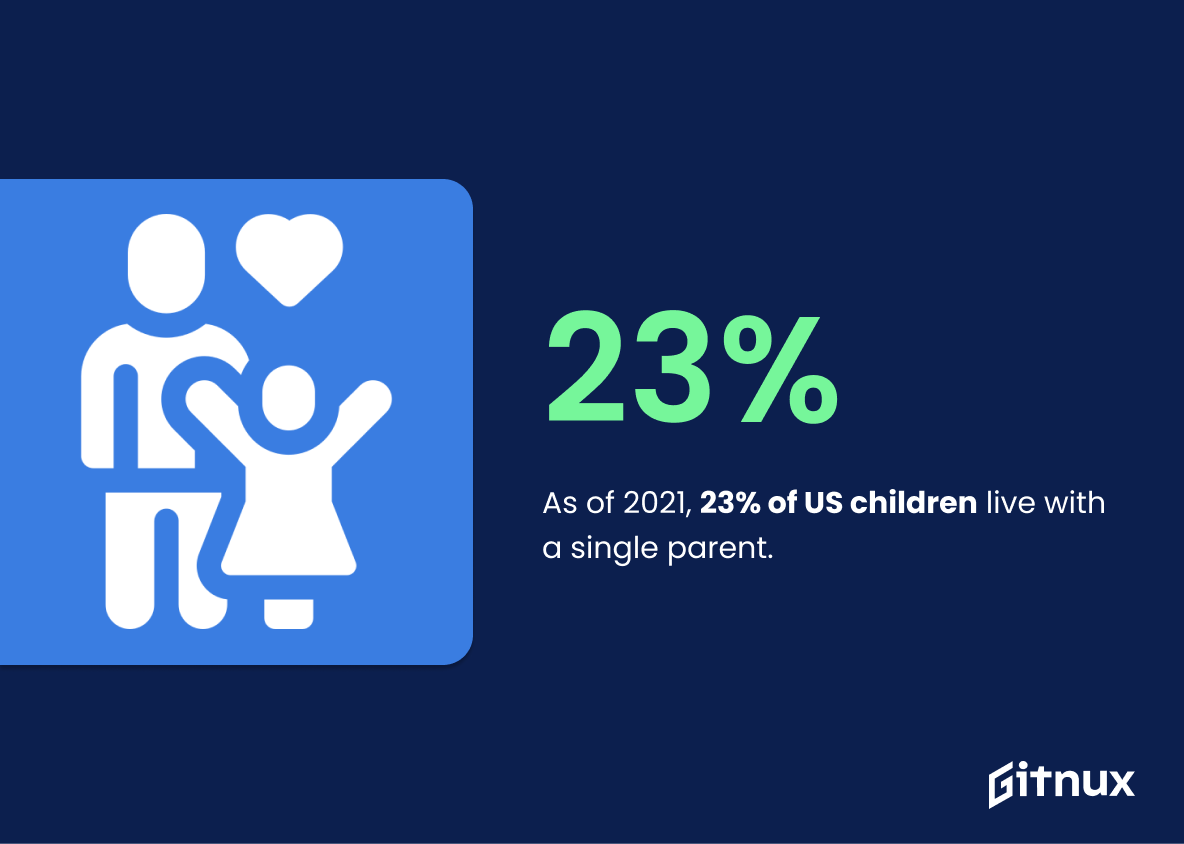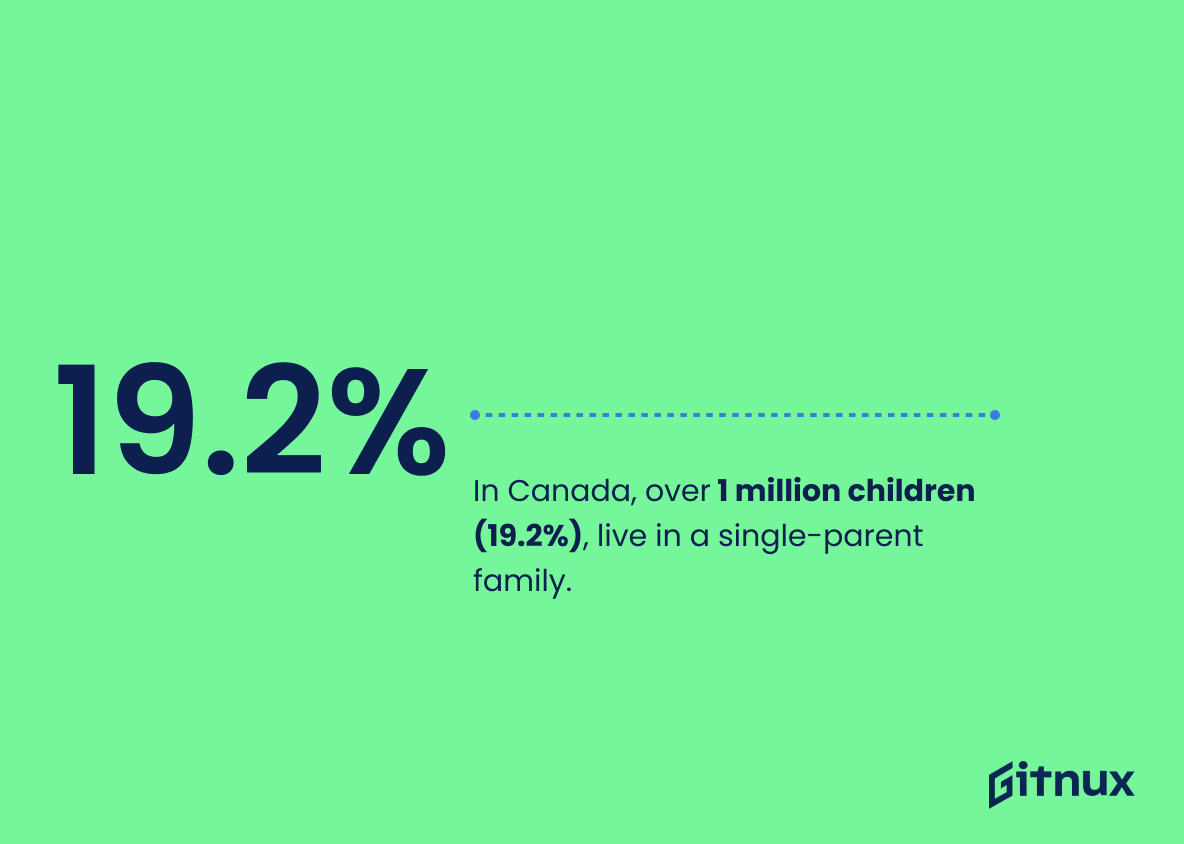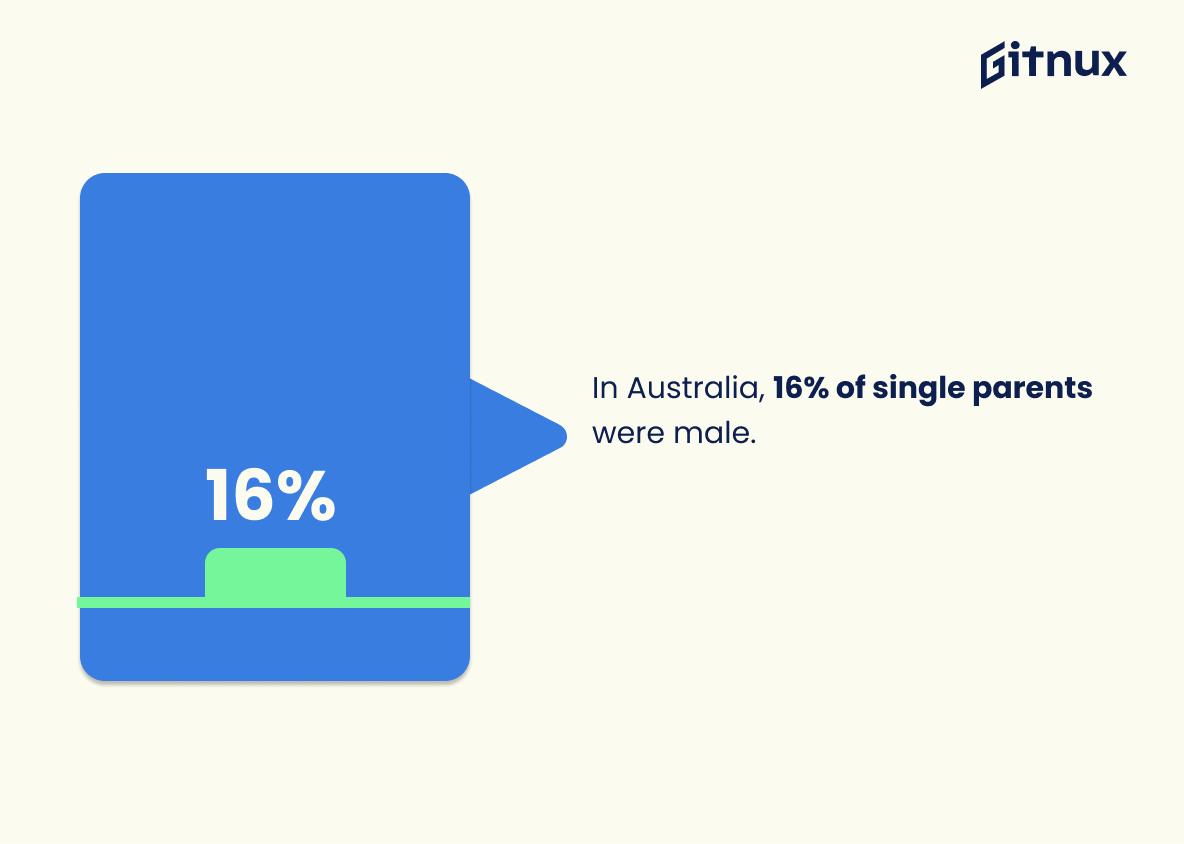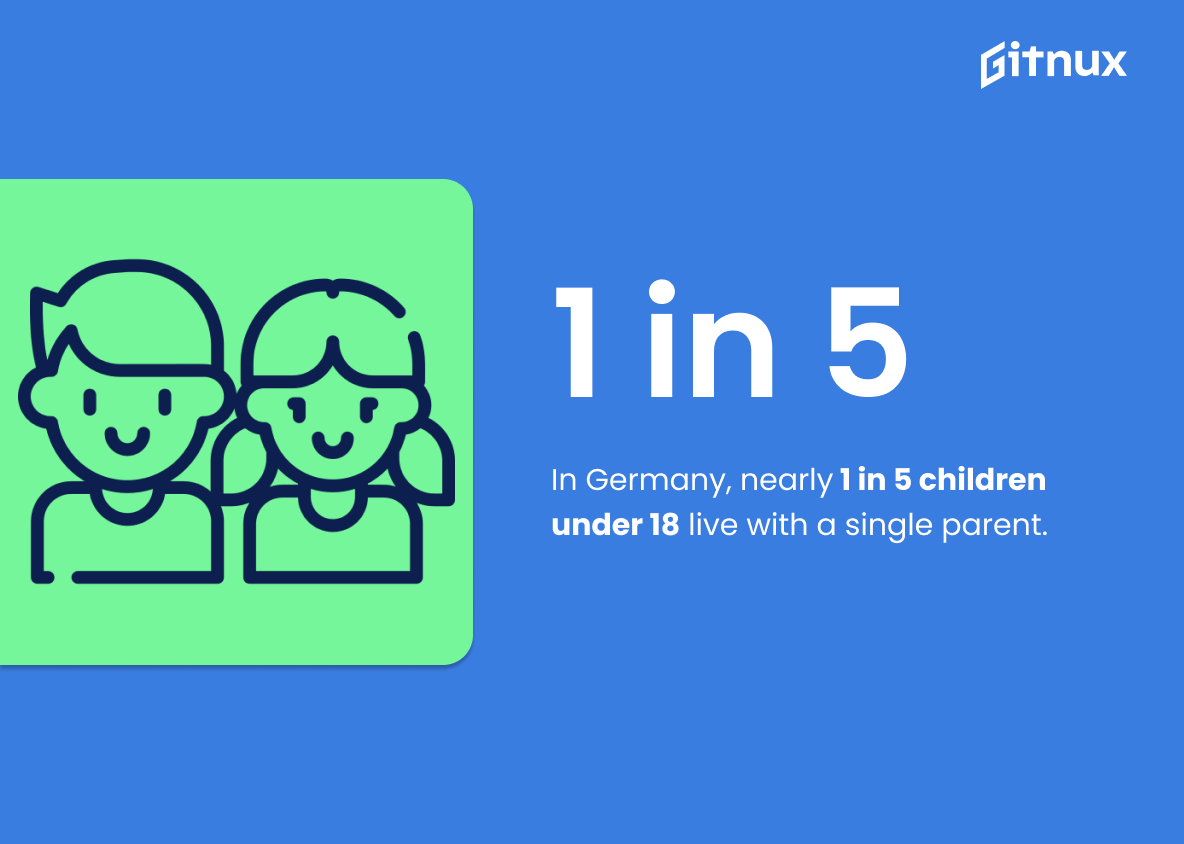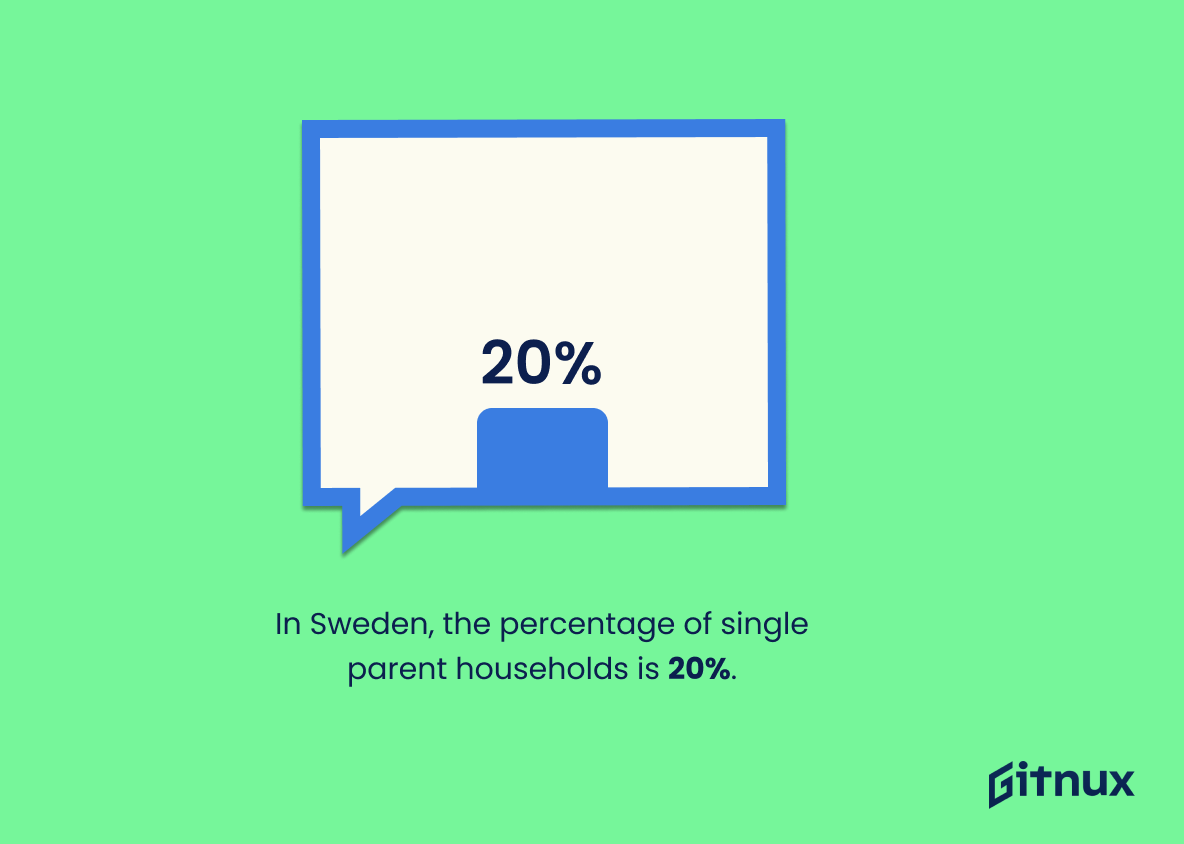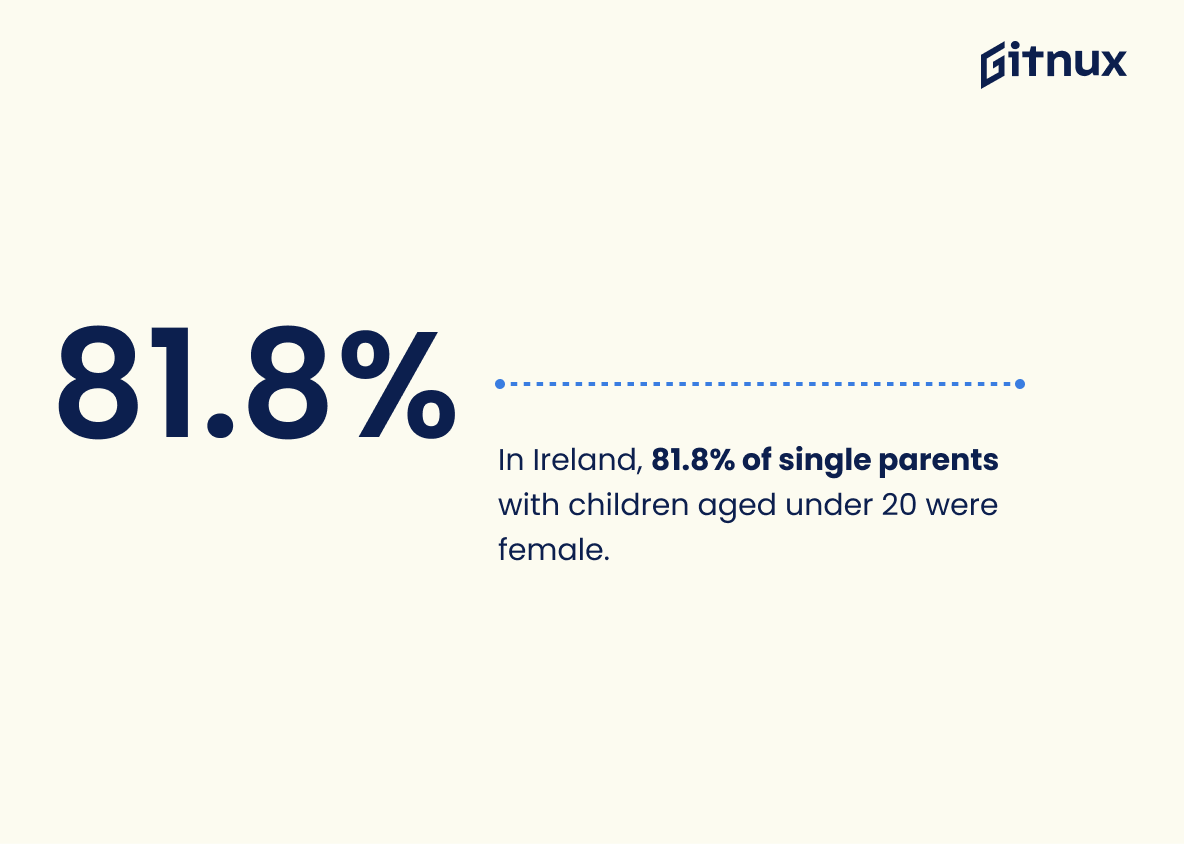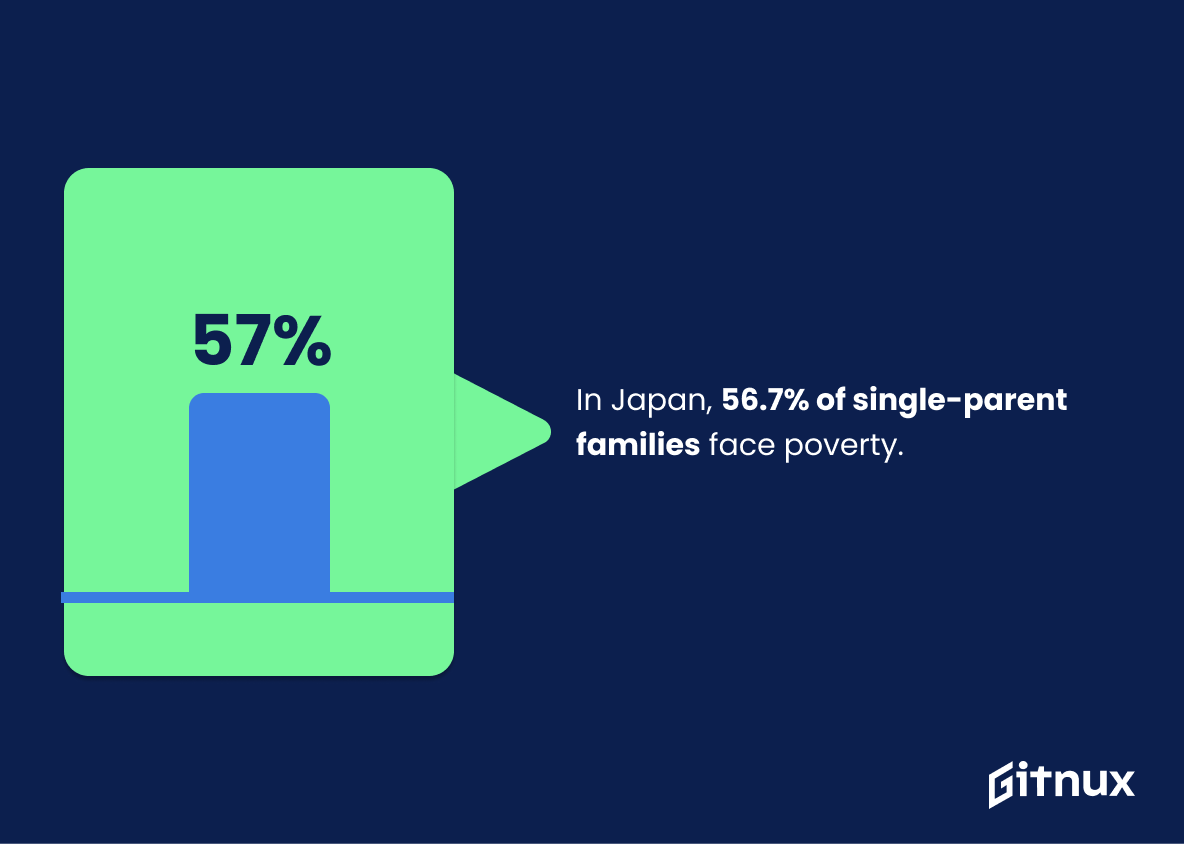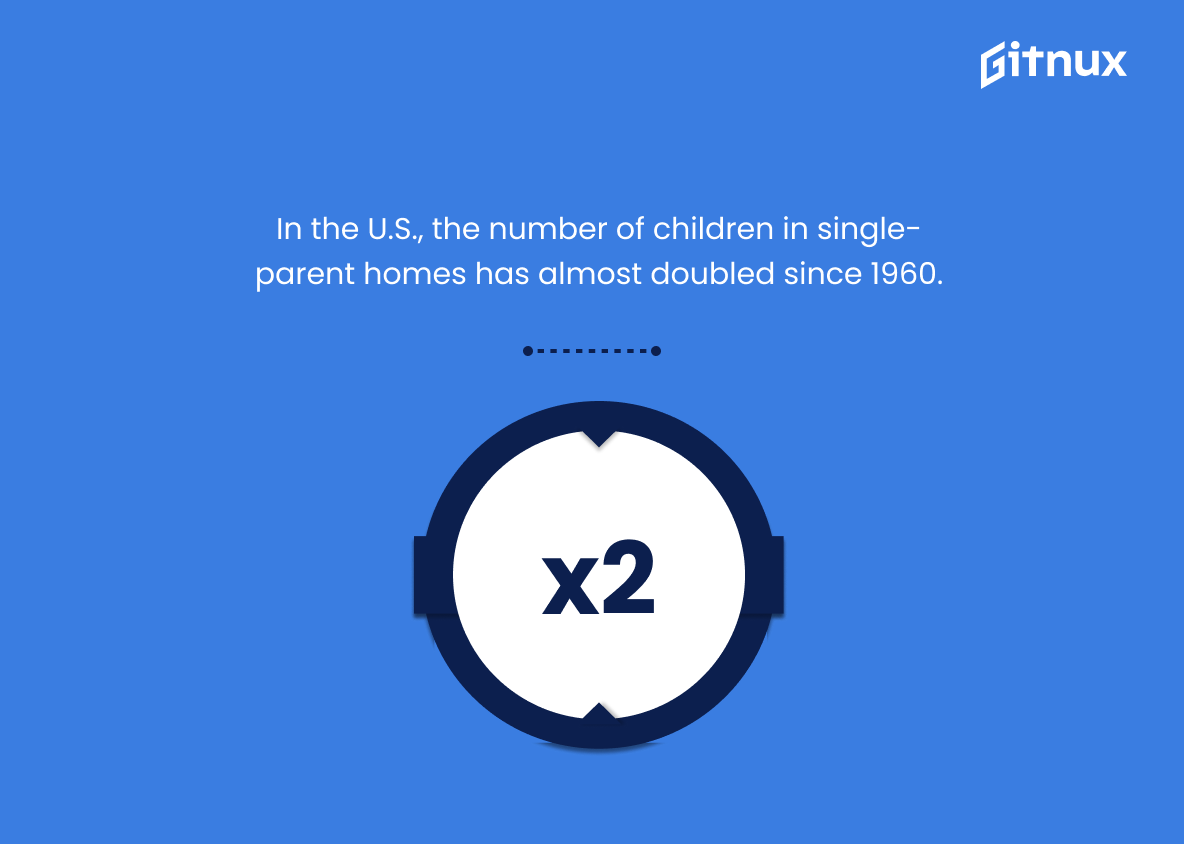In a world dotted with diverse family frameworks, single parenting stands as a resilient corner, holding strong amidst life’s various complexities. A rapidly evolving society has resulted in a significant shift in family dynamics, rendering single-parent households a more frequent occurrence.
This blog post aims to delve into the fascinating world of single parents, exploring the statistics that reflect their journey, struggles, and victories. Whether single due to choice, separation, divorce, or loss of a partner, their story is an integral part of our social fabric. So, take a moment to familiarize yourself with the figures behind the grit and love that shape single parenthood, a reality for many in the world today.
The Latest Single Parents Statistics Unveiled
As of 2021, 23% of US children live with a single parent.
In navigating the labyrinth of single parenting, statistics like these create a critical roadmap. Breathed into life by the 2021 report indicating that 23% of US children are growing up in single-parent households, this figure is a beacon of prevalence and a testament to contemporary familial structures.
It not only demonstrates the extent of single parenting within the United States but also shapes our understanding about the magnitude and impact of this lifestyle on children. This statistic thus emerges as a crucial cornerstone, providing structural support to our blog post which delves into the profound depths of single-parent statistics.
Only 50% of single parents in the UK are in full-time work.
Delving into the heart of single parents statistics in the UK, one illuminating data point stands out – a mere half of single parents find themselves engaged in full-time employment. This nugget of information colours our understanding of the socio-economic landscape single parents navigate daily. It hints at the vast challenges that half of them may grapple with; from child-care related constraints, insufficient job opportunities, or even the decision to solely focus on the upbringing of their children.
It underscores the potential economic struggles, capacity for career advancement, and the tough choices single parents face whilst juggling professional commitments with parenting duties. In short, this statistic is a snapshot of a complex situation, influencing conversations on societal support, government policy and legislative design catering for single parents in the UK.
In Canada, over 1 million children, or 19.2%, live in a single-parent family.
Venturing into the heartland of Canada’s family landscape, a striking finding comes to light – over 1 million children, representing a significant 19.2% of the pool, reside in single-parent families. This bears considerable weight in the ongoing dialogue on Single Parents Statistics in a blog post.
For one, it starkly illuminates the considerable proportion of the Canadian child population embarking on their life journey in single-parent domiciles. This, in turn, underscores the pressing need for policies and support systems that can ease the unique challenges faced by these families.
Furthermore, such a robust figure triggers crucial curiosity about the societal, economic, and psychological implications accompanying this family structure. It brings into focus the need for broader, more inclusive discussions about diverse family models, ultimately enriching the blog post’s scope and depth as it explores the multifaceted world of single parenthood.
All told, this statistic ripples through the blog post, enhancing its relevance and resonance as it paints a vivid portrait of Canada’s single-parent dynamics. It champions an inclusive perspective, carving out space for dialogue, contemplation, and action geared towards a more understanding and supportive society for all family constructs.
In Australia, 16% of single parents were male.
Shining a light on the often underrepresented side of the single parenthood narrative, we discover a distinct piece of the puzzle many might overlook. In Australia, uniqueness interplays with the traditional norms—16% of single parents are males.
This fascinating statistic serves as a testament to the evolving face of parenting, reflecting changes in societal norms, legal scripts and gender roles. It offers invaluable insights into the shifts within familial structures, underscoring the growing role men are playing in the co-parenting sphere. Some food for thought while analyzing the complex canvas of single parenthood, don’t you agree?
In the USA, single mothers earn only 58.9% as much as their married counterparts.
Drawing attention to the distinct income disparity between single mothers and their married counterparts in the USA is essential for this discussion on Single Parents’ Statistics. It underpins the financial struggles single mothers confront daily. Nurture does not only require love and time, as we well know, it also necessitates financial resources for essentials such as food, shelter, education, health care.
Comparing the income of single mothers to that of married ones vividly portrays the economic hardship that often accompanies single parenthood, thereby shedding a stark light on the fierce resilience these mothers embody as they raise their children amidst financial constraints.
In Germany, almost every fifth child under 18 years lives with only one parent.
Delving into the realm of single parenthood in Germany, this startling statistic underpins an important societal trend. Although traditionally, a nuclear family would consist of two parents, the reality for almost 20% of German children tells an entirely different story. They come of age in households that are spearheaded by a single guardian, demonstrating a considerable shift in the family structure paradigm.
In the context of a blog post about single-parent statistics, this figure not only reinforces the extent of the phenomenon but also offers a significant talking point on the challenges and adaptability that comes with solo parenthood. These changing dynamics urge readers to think more deeply about the socio-economic implications and diverse realities faced by modern families.
In Sweden, the percentage of single parent households is 20%.
Unveiling the curtain to an intriguing pattern, the quoted statistic forms a significant cornerstone in our exploration of Single Parents Statistics. With Sweden noted to have 20% of households managed by a singular caretaker, it presents a vivid illustration of the global trend and the significant role single parents play in nurturing the next generation.
This Swedish snapshot not only enhances our understanding of the prevalence of single parenting in Europe, but it also widens the spectrum of discussion, prompting to investigate the societal, financial, and emotional challenges these heroes overcome daily. Despite standing solo at the helm of their household, these parents contribute dramatically to the moral fabric of society, a fact illuminated by our Swedish-themed statistic.
In Ireland, 81.8% of single parents with children aged under 20 were female.
The unfolding dimensions of the statistic – that in Ireland, 81.8% of single parents with children under 20 are female – paints a vibrant picture of gender roles within the realm of lone parenthood. It further anchors the discussion, offering profound insights into the weight women bear in single-handedly raising the next generation. In the kaleidoscope of single parents statistics, it’s a vibrant splash of color, shedding light on the emerald isle’s sociocultural landscape, and sparking conversations on welfare needs, gender equality, and societal support mechanisms.
In Japan, the poverty rate of children of single-parent families is 56.7%.
Highlighting an eye-opening statistic such as ‘In Japan, the poverty rate of children of single-parent families sits at a concerning 56.7%’ gives a stark reality check on the pressing socio-economic challenges these households face. It serves as a poignant reminder of the financial hardships single parents may struggle with in Japan and underscores the urgent necessity for societal support and policy action.
Emphasizing this alarming figure in a blog post about Single Parents Statistics propels conversations towards finding solutions, crafting better social services, and enhancing financial relief policies for these families. It’s more than just a number – it’s a call for comprehensive understanding and necessary change.
In the United States, the number of children living in single-parent homes has nearly doubled since 1960.
The transformation of the traditional two-parent household to a single-parent setup in America fosters a striking revelation in the realm of parenting stats. The surge in the number of children residing in single-parent homes, nearly doubling since 1960, seizes our attention. This trend, blooming from the seeds of societal evolution, highlights the need for more comprehensive policies, improved resources, and enhanced support systems for single parents.
Moreover, the dynamics surrounding single-parent households point to a burgeoning reality, requiring us to rethink conventional parenting frameworks and societal norms. The cascade of change, as reflected in this statistic, is a vital part of the narrative on single-parenting. In casting its light on this dramatic shift, it aids in better understanding single-parent profiles, their struggles, effectiveness, and their children’s developmental outcomes.
Additionally, this statistic comes as a bellwether, foreshadowing possible shifts in our societal fabric and child-rearing practices. Indeed, it underscores the urgency for deeper study, increased dialogue, and progressive discourse on single-parenting in order to foster healthier households and empowered children.
In the UK, single parents tend to be younger than the average parent; 63% of single parents are aged under 40.
Diving into the heart of single parent statistics in the UK, it’s important to paint a picture of the demographics we are speaking about. The age factor plays a pivotal role here, considering a significant 63% are below the age of 40. This is not a mere number but an analytical compass pointing out that the dynamics of parenthood, relationships, and social structure are shifting toward younger ages.
Looking at implications, this potentially sharpens focus areas in policy-making, child-care provisions, socio-economic assistance, or even in designing targeted public awareness campaigns and practical resources. Furthermore, this number sheds light on the need for understanding unique challenges met by younger single parents and crafting socio-economic or educational strategies accordingly. Therefore, this age-centric statistic helps us navigate the broader discourse on single parenthood.
In South Africa, single mothers head 62% of single-parent households.
With single parenthood on the rise, it’s riveting to note that in South Africa, the lioness’s share of single-parent households – a whopping 62%, to be precise – is effortlessly spearheaded by resilient single mothers. This data point illuminates not just the familial structure, but also the dynamics of households which, for one reason or another, pivot around one parent rather than two.
For readers, this casts a spotlight on the remarkable role played by single mothers and makes one ponder about the challenging yet rewarding journey they embark upon. Bringing out the stark contribution of these mothers, who, against the grind, are nurturing the next generation single-handedly, this statistic presents an entirely unseen facet of single parenting. This definitely paints a vivid picture of how single-parent households function in South Africa, thereby grounding the discussion in our blog post. The statistic also signals to policy-makers and corporates in South Africa to consider the needs and challenges of this significant demographic in their initiatives.
Single parents in the US complete fewer years of education, with 16% having less than a high school education.
Shedding light on this poignant statistic exemplifies the complex and intertwined challenges that single parents in the United States face. With 16% possessing less than a high school education, it starkly illustrates the educational gap that widens the economic, social, and even health disparities further.
It ensures that readers grasp the day-to-day realities and the steep hurdles single parents navigate, therefore, emphasizing the urgency for public policies aimed at supporting this vulnerable group. This striking data point is not just a number, but a call to action to level the educational and consequently the socioeconomic playing field for single parents.
In New Zealand, nearly 30% of children live in single-parent households.
This intriguing slice of New Zealand statistics paints a revealing picture – nearly a third of Kiwi youngsters are growing up in single parent families. This numerical nugget emphasizes the sheer prevalence of single-parent households within the nation. In the ever-evolving puzzle of single-parent statistics, this particular piece offers a profound perspective.
It underscores the growing trend and fortifies the argument that single parenthood isn’t merely an occasional occurrence, but a substantial part of the parenting narrative. This percentage adds a crucial dimension to our understanding, as it represents the daily reality for 30% of New Zealand’s children. Hence, it underlines the critical need to recognize, appreciate, and support the Herculean efforts of single parents in raising the leaders of tomorrow.
Conclusion
In sum, single parenting is more prevalent than ever, shaping the familial structure across the globe. Its impact is profound, transcending socio-economic, racial, and geographical boundaries. The tough landscape navigated by single parents, punctuated by demands of work and childcare, requires innovative strategies and supportive networks.
The growing single parent statistics suggest the need for a more inclusive societal structure and policy maker attention, ensuring the well-being of single parent households. As the narrative continues to evolve, it’s imperative that we acknowledge the strength, advocacy, and resilience that single parents display every day. These statistics remind us that single parents and their kids are an integral part of our wider familial tapestry.
References
0. – https://www.www.stats.govt.nz
1. – https://www.iwpr.org
2. – https://www.www.cso.ie
3. – https://www.www.nippon.com
4. – https://www.datacenter.kidscount.org
5. – https://www.de.statista.com
6. – https://www.www.pewresearch.org
7. – https://www.www.abs.gov.au
8. – https://www.www.diva-portal.org
9. – https://www.www150.statcan.gc.ca
10. – https://www.www.gingerbread.org.uk
11. – https://www.www.news24.com
